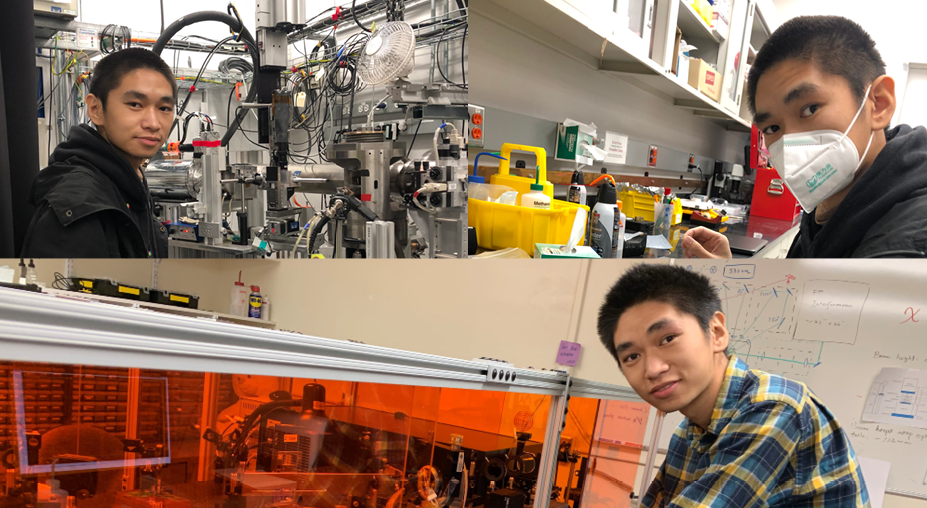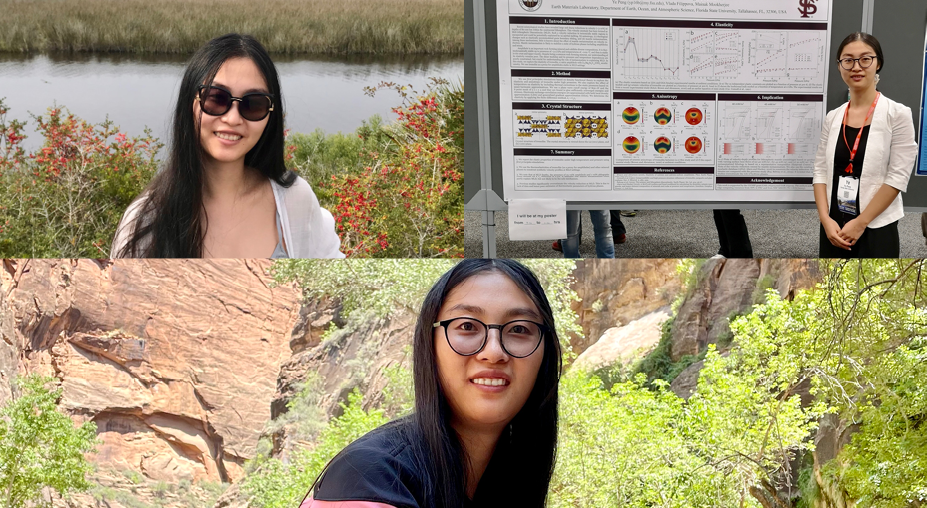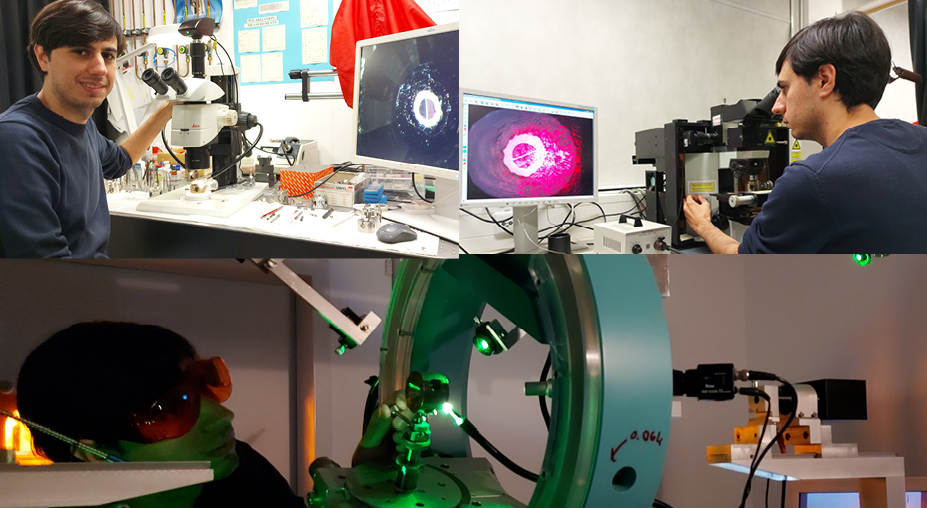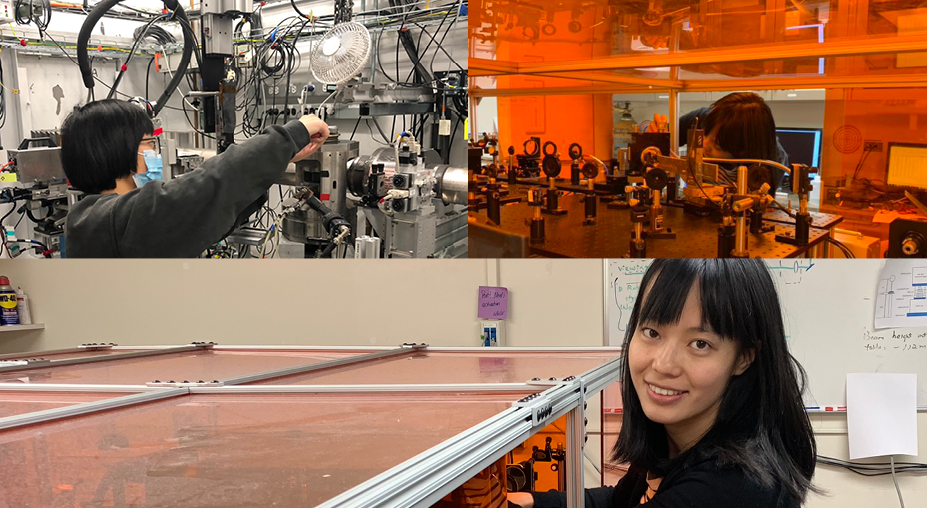Mineral and Rock Physics Honorees
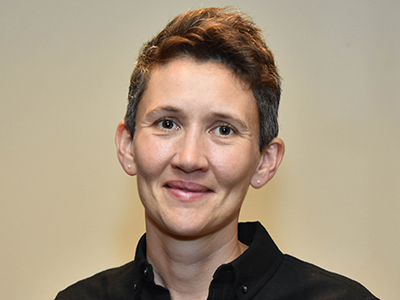
Citation
Melodie French, winner of the 2022 AGU Mineral and Rock Physics Early Career Award, is primarily an experimentalist with interests in brittle faulting and crustal fluid-rock interactions. What distinguishes her experimental work is interpreting mechanical measurements using extensive, meticulously analyzed microstructures. While she is technically the best brittle experimentalist of her generation, it is the microstructures that invariably provide the physical explanations and the key to developing or applying theory. She is as adept at recognizing the limitations of existing theories of Earth deformation and designing studies to collect new data that reveal the physics, as she is at developing theory to explain complex experimental and natural observations. Melodie is fundamentally a physicist and is truly worthy of this award. She has made significant contributions to mineral and rock physics in virtually all of her published studies.
As a Ph.D. student, Melodie studied the mechanics of San Andreas’s creeping section (CS), focusing on deformation mechanisms during dynamic slip and shear at the plate rate. In the process she explains the significance and origin of fluidized layers found (and misinterpreted) in natural shear zones. She also discovered the proper CS plate rate deformation mechanism, missed by other researchers. As a postdoc, Melodie shifted toward studies of subduction zone faulting and also eventually into leadership in the SZ4D initiative. As in the two early studies, Melodie’s primary experimental targets are saturated fault rheologies, spanning shallow splay faulting in accretionary sediments to deep nonvolcanic tremor. She first studied slow-slip events (SSEs), demonstrating that elevated fluid pressure (not reduced effective stress) decreases both fault slip speed during stress drop and degree of localization, producing much more dissipated energy than is assumed in standard models. More recent are unique experiments to determine wave speeds and attenuation in subduction settings; these target key geophysically determined deep crustal properties (tomography inferred wave speed, Vp/Vs ratios, frequency content of deep seismicity). As faculty, Melodie has built a lab for subduction conditions and was awarded a National Science Foundation CAREER Award to study the effects of loading history on the shallow extent of subduction megathrusts. Last is Melodie’s recent field collaboration that combines thickness from exhumed terranes and laboratory-determined rheology to establish the lithologies and strain rates that accommodate slow slip. This is a road map both for field geologists to find evidence of SSEs in microstructures, if such evidence is preserved, and for modelers to produce credible simulations of slow faulting in the deep crust.
—Award Nominator
Response
I am very grateful to the colleagues and mentors who thought of me and took the time to nominate me for this award, and to the many people who make my career a joyful and rewarding endeavor. I have benefited from formal mentors who taught me a great deal of science and challenged me to grow professionally and personally. At Oberlin, Steve Wojtal taught me to use simple, geology-inspired models to think across scales. At the University of Wisconsin–Madison, Laurel Goodwin instilled the importance of careful, unbiased observations. At Texas A&M, Fred Chester and Judi Chester taught me how to design research that precisely tests existing theories or develops new ones. And at the University of Maryland, Wenlu Zhu helped me combine all of these perspectives into the workings of a productive scientific career.
A number of informal mentors have welcomed me into their labs and field seasons. I probably owe more of my success than I will ever know to their support from the sidelines. I am particularly lucky to have the best colleagues and friends in both the rock deformation community and the Earth, Environmental and Planetary Sciences Department at Rice University. At Rice I found a group of colleagues whom I genuinely enjoy and who have introduced me to new scientific problems and ways of thinking.
In the latest stage of my career, I am most influenced by the students and postdocs at Rice. Starting an experimental research program comes with countless challenges, and I am in awe of the students (Celine, Ben, and Stewart) who joined our group early, took on these challenges with me, and made the science happen. I am also grateful to the students (Emory and Edgar) who actually saw what they were getting into and joined us anyway. Collaboration with my first postdoc at Rice (Cailey) has taken my research to unexpected places and resulted in the dearest of friendships.
Finally, my greatest intellectual stimulation and growth come at the end of the day when I go home to the most interesting people I know.
—Melodie French, Rice University, Houston, Texas
Field Photos
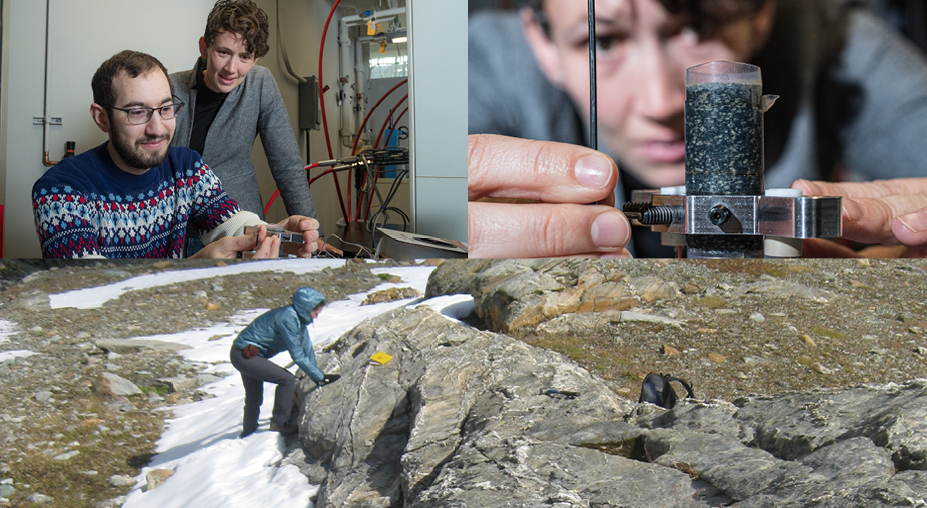
Image credit: Jeff Fitlow, Rice University
Research Award
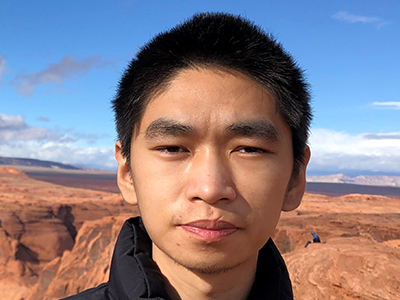
Citation
Ming Hao received the 2022 Mineral and Rock Physics Graduate Research Award for his outstanding work investigating the seismic visibility of eclogite in Earth’s upper mantle based on the experimentally determined pressure-/temperature-dependent single-crystal elasticity of omphacite and jadeite.
Ming’s work on the high-pressure/-temperature elasticity of omphacite provides the most important thermal elastic parameters that are in critical need for locating eclogite in Earth’s upper mantle through seismic observations. The subducted basalt, or eclogite, is among the most important compositional heterogeneities in Earth’s deep interior. He found that an undeformed eclogite transformed from mid-ocean ridge basalt is seismically invisible between 200- and 300-kilometer depth, and a deformed 10-kilometer-thick oceanic crust can result in a delay time of approximately 0.2 second, which is not ignorable in the seismic shear-wave-splitting observations. Moreover, Ming also conducted the first high-pressure/-temperature single-crystal elasticity measurements on jadeite. He found that the shear modulus, thus Vs of jadeite, has extremely small, if not negligible, temperature dependence. Jadeite is extremely fast, even faster than pyrope, which is the magnesium (Mg) end-member of garnet, under upper mantle pressure-temperature conditions. As a result, the continentally originated sediments/crust, if subducted or delaminated into the deep Earth, would be significantly faster than the ambient mantle due to the abundance of jadeite in them. These discoveries are important for not only the mineral physics field but also the broader geophysics and geochemistry community, in terms of studying various geochemical heterogeneities in Earth’s interior.
Since the completion of his Ph.D. at the University of New Mexico, Ming has become a postdoctoral fellow at the Earth and Planets Laboratory, Carnegie Institution for Science. He is now using a multianvil press to conduct sound velocity and electric resistivity measurements simultaneously on mantle materials at high-pressure/temperature conditions.
—Jin Zhang, Texas A&M University, College Station
Response
I am honored and humbled to receive the 2022 Mineral and Rock Physics (MRP) Graduate Research Award. I am lucky that I had the chance to work with excellent people during my Ph.D. study at the University of New Mexico.
I would first give my thanks to Dr. Jin Zhang, my adviser, for all the guidance and encouragement in the past 5 years. I would like to express my sincere gratitude to Jin for her patient instruction and help to clarify various confusions that I encountered during my Ph.D.
I also would like to thank all the wonderful scientists who have helped me in the past few years. Dr. Brandon Schmandt is my go-to person for seismology. Dr. Przemek Dera, Dr. Dongzhou Zhang, and Dr. Rostislav Hrubiak have provided enormous amounts of help with the X-ray diffraction experiments and X-ray falling sphere viscometry experiments (in particular, during the pandemic!). I am also thankful for all the stimulating discussions with Dr. Bin Chen, Dr. Adrian Brearley, Dr. Joshua Townsend, Dr. Peter Olson, and Dr. Qin Wang. I am also fortunate to conduct my Ph.D. research and collaborate with so many capable, kind, and helpful student/postdoc scientists such as Wen-Yi Zhou and Dr. Mingqiang Hou in Jin’s research group.
Finally, thanks to the AGU Mineral and Rock Physics section for this award, and it means a lot to me. Thank you for your efforts to support graduate research.
—Ming Hao, Earth and Planets Laboratory, Carnegie Institution for Science, Washington, D.C.
Field Photos
Graduate Research Award

Citation
It is my great privilege to recognize Dr. Ye Peng as a recipient of the 2022 Mineral and Rock Physics Graduate Research Award. Ye earned her B.S. at the University of Science and Technology of China (USTC) and her Ph.D. from Florida State University, working with Dr. Mainak Mookherjee. Ye has recently moved to Rice University as the Pan Postdoctoral Associate, where she is currently collaborating with Dr. Rajdeep Dasgupta and Dr. Cin-Ty Lee.
During her Ph.D., Ye assessed whether seismically observed midlithospheric discontinuity (MLD) in cratons could be explained by metasomatism. To evaluate whether mantle metasomatism or the presence of hydrous mineral phases such as amphiboles can explain the geophysical observations of MLD, the physical properties of amphiboles needed to be better constrained at conditions relevant to MLD depths. Ye has made fundamental contributions by providing better constraints on the thermoelastic and transport properties of amphiboles relevant for MLD through a range of theoretical and experimental studies. Owing to her broad interests, she also contributed to a better understanding of seismic and magnetotelluric signatures of hydrous mineral phases in subduction zone settings.
—Geeth Manthilake, Laboratoire Magmas et Volcans, CNRS, Université Clermont Auvergne, Clermont-Ferrand, France
Response
It is an honor for me to receive the 2022 Graduate Research Award from the AGU Mineral and Rock Physics section. I wish to express my deepest appreciation and gratitude to Dr. Mainak Mookherjee, my Ph.D. adviser, who encouraged me to pursue various research topics, including midlithospheric discontinuities and subduction zone systems. He also offered me excellent opportunities to explore those research questions from different perspectives, ranging from first-principles simulations to experimental approaches. He provided incredible inspiration and support throughout my graduate school journey.
During my Ph.D., I was extremely fortunate to work with many outstanding individuals who encouraged and supported me. Dr. Geeth Manthilake guided me to conduct multianvil-based seismic wave velocity and electrical conductivity experiments with tremendous expertise and patience. Dr. Rajdeep Dasgupta introduced me to the field of experimental petrology and provided me with stimulating feedback on my research work. I also want to thank my lab mates: Dr. Sumudu Tennakoon, who taught me resonant ultrasound spectroscopy and continued to help me even after he left for industrial work; Dr. Abhisek Basu, who led me in Raman spectroscopy and diamond anvil cells; Dr. Suraj Bajgain, who assisted me with molecular dynamics; and Aaron Ashley, who always gave critical suggestions for revising my manuscripts.
The Graduate Research Award motivates me to continue to produce better work in the future and push my abilities forward. Thanks again to AGU and the Mineral and Rock Physics section for this recognition.
—Ye Peng, Florida State University, Tallahassee
Field Photos
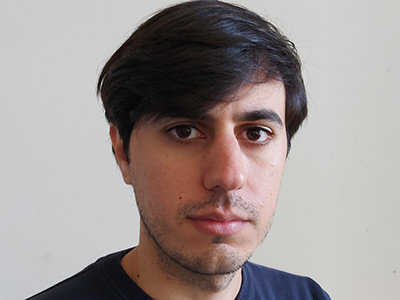
Citation
Giacomo Criniti is an extremely worthy recipient of the John C. Jamieson Student Paper Award for his exceptional contribution to the field of mineral physics made by determining the elastic properties of bridgmanite, Earth’s most abundant mineral, at pressures compatible with the deep lower mantle, as published in the Journal of Geophysical Research: Solid Earth (Criniti et al., 2021, https://doi.org/10.1029/2020JB020967). The Brillouin scattering measurements of MgSiO3 bridgmanite presented in this paper include the first single-crystal measurements of the longitudinal wave velocity, vP, of bridgmanite at pressures of Earth’s deep lower mantle. Previous Brillouin scattering studies on both single-crystal and polycrystalline bridgmanite samples either have been carried out only up to approximately 45 gigapascals, or have been only able to constrain the aggregate shear wave velocities at deep mantle conditions. The main problem that is elegantly addressed in this paper is that when high-pressure acoustic phonon measurements are made on bridgmanite in the diamond anvil cell using Brillouin scattering, the bridgmanite vP signal, which is increasing in frequency with increasing pressure, merges and is obscured by the much larger S wave peak of the diamond anvils, at pressures higher than 30–45 gigapascals. This prevents the velocity from being determined at higher pressures. Thanks to his exceptional experimental skills and his deep understanding of crystallography and mineral elasticity, Giacomo was able to align both the diamond anvils and bridgmanite crystals to allow the vP signal to be measured on the high-frequency side of the diamond vS signal, at pressures above 50 gigapascals. By making simultaneous single-crystal measurements of density and acoustic wave velocities, Giacomo obtained a self-consistent data set, which places strong constraints on the elastic behavior of bridgmanite up to pressures of 80 gigapascals. Using the newly determined bridgmanite elastic properties to compute wave velocities for a pyrolite bulk composition at lower mantle conditions, he found good agreement with seismic reference models, suggesting that there is no basis in seismology for considering that the average Earth’s lower mantle has a different composition than the upper mantle. This is contrary to what was suggested by studies on polycrystalline bridgmanite in which no measurements of vP were possible. These measurements were only possible through Giacomo’s extraordinary experimental abilities and dogged perseverance.
—Tiziana Boffa Ballaran and Daniel J. Frost, Bayerisches Geoinstitut, University of Bayreuth, Bayreuth, Germany
Response
Being an extremely enthusiastic person when it comes to discovering new things, my choice of joining the Bayerisches Geoinstitut of the University of Bayreuth was likely the best one I’ve made in my career so far. The institute is an experimentalist’s wonderland when it comes to high-pressure research, and therefore it seems only natural to me that I fell in love with experimental mineral physics when I first got to work with Tiziana Boffa Ballaran. Tiziana is both a brilliant crystallographer and a caring supervisor, but the project she assigned me for my master’s thesis was certainly not an easy one. The idea was to compress single crystals of MgSiO3 bridgmanite in diamond anvil cells to high enough pressure to observe a crossover between the sample vP and diamond vS by Brillouin scattering. This represents both a crystallographic problem and an experimental challenge. A lot of trial and error was involved in finding a protocol to define the most suitable orientation and size of bridgmanite crystals, focused ion beam milling strategy, and sample loading in the diamond anvil cell. Fortunately, our technician Raphael Njul was always ready to help by preparing perfect single-crystal platelets in a very short time. Even thus, assembling a single cell took on average of 1 week, and the process would have driven me crazy were it not for Alexander Kurnosov. No matter the hour or the day, Alex was always available to share his extensive knowledge about diamond anvil cells and Brillouin scattering and help with troubleshooting in the data collection and analysis. Last but not least, it was thanks to Daniel Frost and his teachings about the ways of thermodynamics that I was able to put such valuable data into the right context. In the end, the project proved to be way harder and more time consuming than I expected, and by the time it was finished I was already at the end of the first year of my Ph.D. Writing a paper is a team effort, and if it were not for all the people I mentioned, it would have been impossible for me to finish. This is why I am extremely grateful to everyone who supported me throughout this project and to the Mineral and Rock Physics section of AGU for recognizing our efforts by awarding me the 2022 John C. Jamieson Student Paper Award.
—Giacomo Criniti, Bayerisches Geoinstitut, University of Bayreuth, Bayreuth, Germany
Field Photos
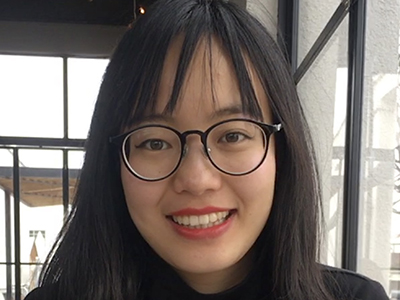
Citation
Wen-Yi Zhou received the 2022 Mineral and Rock Physics (MRP) John C. Jamieson Student Paper Award for her outstanding work investigating water content, temperature, and olivine fraction variations at 410-kilometer depth using high-pressure/-temperature elasticity data of wadsleyite. This work was published in Nature Communications earlier this year and presents the first simultaneously inverted 2D temperature and petrological model in Earth’s interior based on experimentally determined mineral physics data. This study also provides direct evidence for the thermochemical heterogeneities in Earth’s interior, which is important for understanding the material exchange processes between the upper and lower mantle. Wen-Yi is expected to graduate with a Ph.D. degree from the University of New Mexico in winter 2022.
—Jin Zhang, Texas A&M University, College Station
Response
I am honored and humbled to receive the 2022 John C. Jamieson Student Paper Award from the Mineral and Rock Physics section of AGU. I am fortunate to have the opportunity to work on this project and am grateful for the generous help from all my wonderful coauthors.
I would first like to thank my Ph.D. adviser and coauthor, Jin Zhang (Texas A&M University), for her guidance and support from the day we began experiments to the day the paper got accepted. Her timely feedbacks and years of experience helped me overcome difficulties and achieve progress in every step. She encouraged me to read literature in different fields to be open-minded and always supported me to gain new skills. She is also a role model who gives me the courage to pursue science.
I would also like to thank all the other authors who have offered a lot of help for this research project. Ming Hao (Carnegie Institution for Science) generously helped me with these 24-hour experiments. Brandon Schmandt (University of New Mexico) introduced me to the world of seismology and inspired me to study mantle heterogeneities from a global perspective. Bin Chen (University of Hawaiʻi at Mānoa) helped us to synthesize precious wadsleyite samples and provided insightful suggestions about the manuscript. Ruijia Wang (Southern University of Science and Technology) offered her professional help in coding whenever I needed it. Many thanks to the Mineral and Rock Physics section of AGU for this award.
—Wen-Yi Zhou, University of New Mexico, Albuquerque
